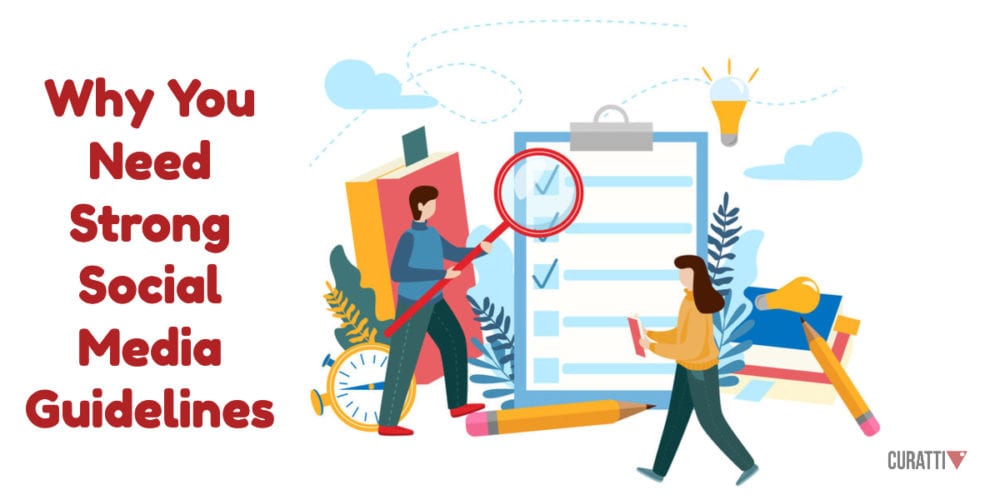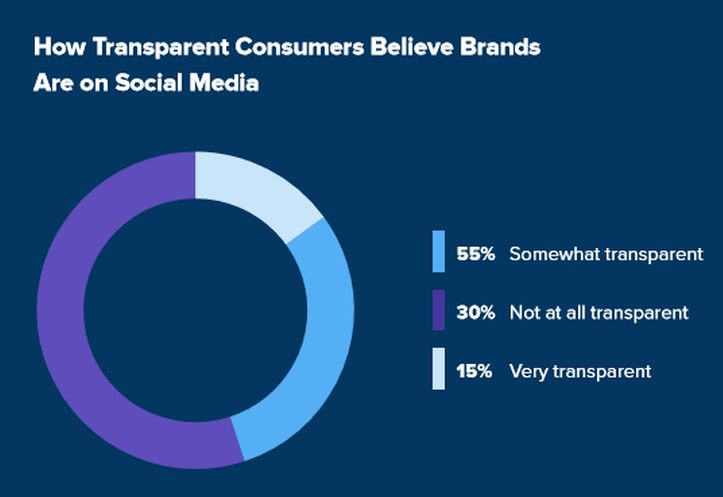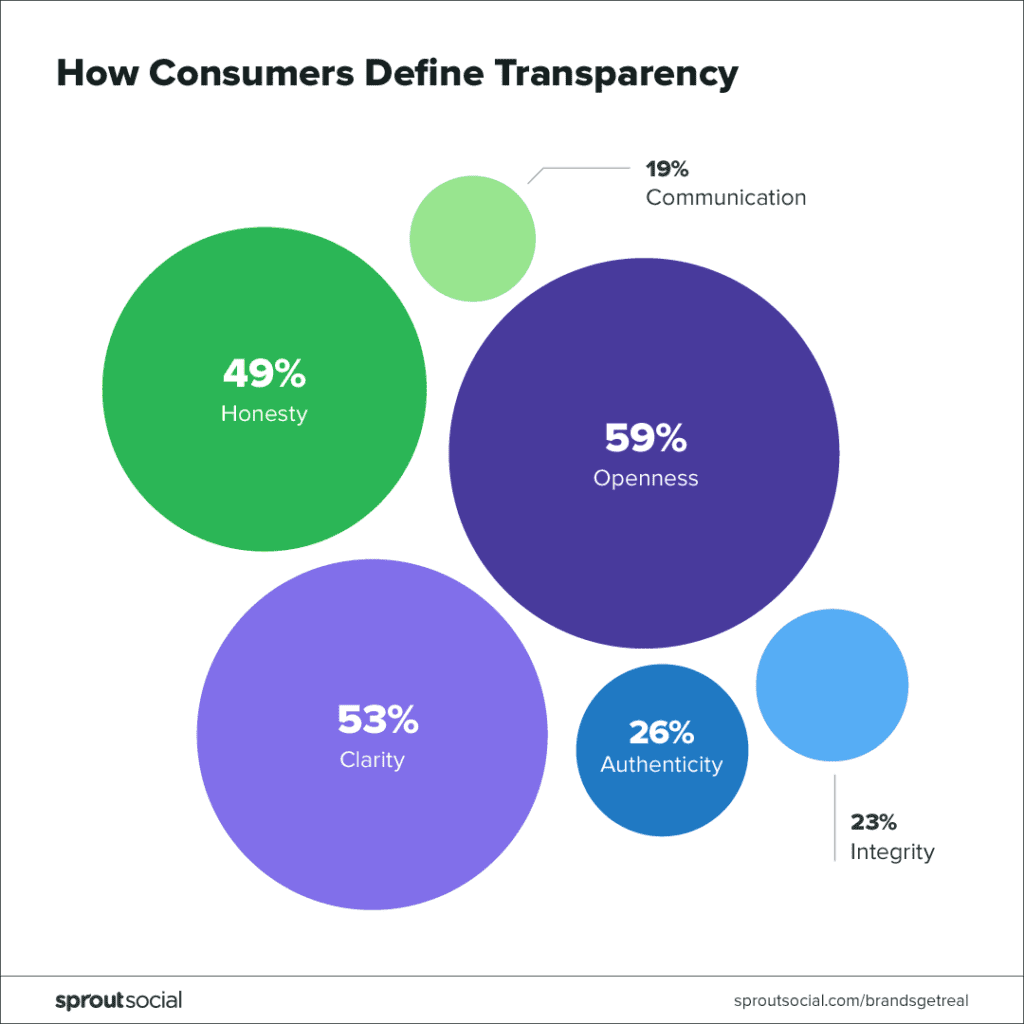How to Develop Efficient Social Media Guidelines That Will Protect Your Business

Have you ever feel overwhelmed at the thought of creating social media guidelines for protecting your business reputation? Many wonder how to develop efficient guidelines for social media that educate team members, encourage team collaboration, and protect their business.
This article shares proven strategies for creating guidelines that offer an effective work plan for using social networking platforms. And while there are several marketing tactics for this purpose, many are time-consuming and don’t get results.
To streamline tasks, smart marketers use social media analytics and listening tools to track mentions and other conversations and analyze real-time insights. Research shows that more than 3.6 billion people were busy on social media globally in 2020.

Source graphic by Statista
Therefore, how would your company’s social media audience react when you post defaming content? How would they respond if your team posted illegal content on your business account?
When you are responsible for posting content on your company’s behalf, the materials and opinions you share across channels represent your organizations’ values. For this, you want to be careful how and what you post to protect your business reputation. That is where social media guidelines come to play.
What Are Social Media Guidelines?
Social media guidelines are documents that inform employees or virtual assistants about social media best practices. The directions summarize how employees using social media should behave for a healthy business/consumer relationship.
For the most part, the document can cover:
- Social media protocol and best practices
- Risk management advice
- Valuable tools, and
- Resources
But often, people use social media policy, style guides, and guidelines interchangeably. So it’s best to tackle them accordingly.
Why Are Social Media Guidelines Essential?
Protecting your business’s online reputation and managing possible unintentional risks are two of the most important reasons why you need social media guidelines (SMGs). It tells you what your organization’s content is suitable for posting on social media and which ones are not.
Also, SMGs enable company employees to consider their business ethics and values when using social networking sites. These marketing principles/rules allow you to maintain your online brand reputation and safeguard your business from potential legal issues and customer churn.
Some unique benefits of social media guidelines include:
- They safeguard your business reputation
- Encourage team spirit and productivity
- Control employee behavior on social networking sites
- Ensure conversation and posting uphold company values
- They define confidential company information
- Outline the best way to engage with users
- Protecting you from legal issues
5 Ways to Create Social Media Guidelines for Your Online Business
From this post, you will learn five ways to produce clear guidelines that will help you retain your brand reputation and safeguard your business.
1. Examine Your Current Business Guidelines
Examining your existing social media guideline is the first place to start. This approach allows you to make adjustments to your current guides where necessary. For example, if your current procedures have only a few pointers, why not amend them and add more principles. Take, for example, Ford Motor Company.

Graphic source: SlideShare
The company went in-depth and provided several rules with five primary guidelines for employees to consider when using social media. From the visual above, you can see the outlined guidelines that employees must follow when participating in social media conversations or posting content.
Take a closer look, and you will see that five-pointers stood out.
- Be honest about who you are
- Clarify that your opinions are your own
- Be humble and respect others
- Use good judgment when sharing only public information—including financial data.
- Note that your comments are permanent.
So, following Ford’s guidelines example will keep you going in the right direction. Examine your current social media guidelines and update them accordingly. After the update, email each team member and send out text messages about the new updates.
2. Create Guidelines That Educate Your Social Media Team
Since your goal is to protect your online presence, developing social media guidelines for your team is critical. Why? Because the posts they create are on behalf of your company and must comply with your core business principles. Your company’s mission may be to engage and address consumer needs.
As a result, instead of receiving negative feedback or unconstructive criticism from social media followers, your audience will engage with your content. They will like, comment, and share your posts with their friends and increase traction. Why? Because by following your organization’s written document, your posts will be relevant, informative, and respectful.
Negative feedback from your audience can be a challenge to deal with on social media, and you want to avoid that. But if you are criticized online, reflecting on your guidelines will help your team know how to reply to negative feedback. That way, you will maintain a healthy and relevant conversation.
Given this, create guidelines that educate your team but not restrict their use of social media. Your guidelines should be explanatory enough for easy understanding and encourage team collaboration. This approach will help develop healthy brand/customer relationships.
3. Determine What’s Essential to Your Business Interests
When writing guidelines for social media and unsure of what details to present to your team, it would be best to determine what is vital to your company’s interests. In a company setting, the best way to tackle it is to call for discussion sessions with team members/employees. (* see below) Discuss any questions they may have and document their responses.
Then use their feedback to create a social marketing guideline that serves your business interests. For example, if you’re not sure about the information to provide, you can give employees these standard guidelines:
- Do not post on social media in cases of uncertainty.
- Avoid disclosing company confidential data.
- Refrain from any illegal activity across social media sites
- If you deem it necessary to post, use a disclaimer to show that the posts and comments are not the views of your company
- Keep in mind that your posts will remain constant across channels.
The idea is to ensure that all parties can easily understand the document. Also, it should consist of your brand objectives on social media.
(* For small companies who are likely to have a VA doing their social media, by all means, take advice from an assistant who likely has more experience than you. But ultimately, it’s your company, so you are responsible for your social media guidelines. Even if you do everything yourself, keep notes so that you can hand over this task if needed)
You may also want to read: 5 Editorial Guidelines Based Tips To Writing Better Content
4. Ensure Transparency in Your Guidelines With Team Members
Why should you care about transparency when creating guidelines for social media? Because it is a unique business best practice that helps you retain existing customers. According to a Social Sprout survey, more online consumers will stop transacting business with your brand due to poor transparent business communications on social media.
In fact, 55% of respondents believe that companies are somewhat transparent on networking sites. 30% say they are not transparent, with a mere 15% saying brands are transparent.
According to the study:
- 86% of US consumers say that business transparency is more important now than before
- 85% of customers are more likely to stick with a brand in times of crisis due to the company’s history of transparency
- Over 50% of shoppers will likely do business with companies that are transparent on social media.
- Almost 90% of consumers will turn to your competitors for your lack of transparency on social media.
These social networking statistics reveal the importance of being transparent on social media. It indicates an apparent connection between transparent social media communications and consumer spending. Consequently, your guidelines will be straightforward and encourage team transparency throughout social networking sites.
As a result, you are sure to attract more engagement, generate more leads, and increase sales while protecting your online image. But what does this mean for the public/consumers?
What Does Transparency Mean for Online Consumers?
To help you create guidelines that help your team maintain transparency, you need to understand what consumers consider transparent social media communication. Sprout Social revealed some impressive results.
Please, consider the following statistics:
- Almost 50% of respondents say that transparency means honesty in your business dealings
- 59% said it means openness, and
- Over 50% say clarity in business counts as transparency.
These benchmarks offer a picture of what social media users need from you. The best part is that they provide various ways you can show transparency across social networks. Therefore, develop a transparent social media guideline that encourages team members to display transparency. It will improve your business’ reputation and profitability.
You may also want to read: Keep Your Brand’s Presence Consistent by Developing Writing Guidelines
5. Develop Social Media Editorial Guidelines for Particular Platforms
To make gains with social media marketing, you need a durable social media strategy. So, developing editorial guidelines for particular social media platforms is crucial. This is especially important when more people handle your social media activities.
Moreover, because all social networking sites are not the same, your editorial guidelines enable you to establish healthy relationships on each channel. For instance, your Twitter account may attract extensive engagement—comments, likes, and retweets. Tracking these metrics is one of the best ways to make big wins.
But you realize that how you interact on Twitter may not be the same as on Facebook. Your team may have to take turns to keep track of brand mentions and other conversations on all platforms. Even if you’re using a social media listening tool to track activities and listen to brand mentions, someone must run checks regularly.
In that way, you can promote interactions and improve engagement. But since more than one person handles this aspect of your business, they are sure to execute it differently. That is where a social media editorial guideline plays a vital role.
It lets you define and maintain your brand identity. How? Your company’s social media editorial guidelines decide your brand’s content style, structure, and strategy for posting across channels to maintain consistency.
Wrap up
There you have it. Creating a result-driven social media guideline does not have to be complicated. Apply the tips above and follow the examples of the brands mentioned in the post to draft your social media usage guide. Note that your document must be well-written and easy to understand.
It must also be transparent and help the social media management team display transparency to networking sites. It allows you to build brand trust, grow your leads and income, and safeguard your business.
What are your thoughts and insights? Please, tell us in the comments!
Sign Up For Our Mailing List
If you’d like to receive more in-depth articles, videos, and Infographics in your inbox, please sign up below. We’ll also keep you abreast of our upcoming soup-to-nuts blogging class, which will start in June.

Sign up for the newest articles from Curatti, delivered straight to your inbox
Featured image: Copyright: ‘https://www.123rf.com/profile_yellowdesign‘ / 123RF Stock Photo
Moss Clement
Latest posts by Moss Clement (see all)
- How to Develop Efficient Social Media Guidelines That Will Protect Your Business - April 13, 2021
- 6 Marketing Strategies That Will Skyrocket Your Service Business - August 27, 2020


